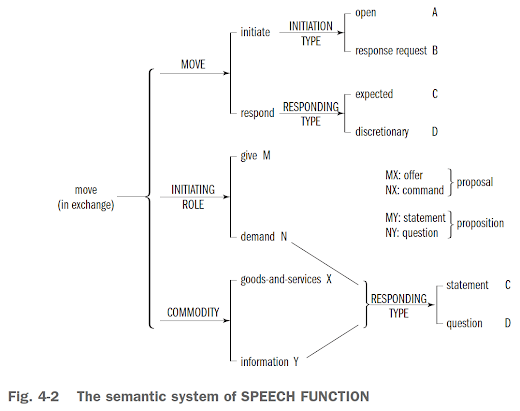The model of conversational structure developed to this point consists of three networks, two in the discourse semantics (NEGOTIATION at exchange rank and SPEECH FUNCTION at move rank) and one in lexicogrammar (MOOD at clause rank). Clauses selecting independently for MOOD are thus classified in three ways: by MOOD class, by SPEECH FUNCTION class, and with respect to their structural function in the exchange (i.e. with respect to their NEGOTIATION class). The picture is presented, by strata and rank, in Fig. 2.12.The model thus makes provision for two types of incongruence: between NEGOTIATION and SPEECH FUNCTION and between SPEECH FUNCTION and MOOD.
Blogger Comments:
[1] To be clear, Martin does not provide a system network for NEGOTIATION, and the networks of SPEECH FUNCTION and MOOD are based on those previously devised by Halliday.
[2] This misunderstands the relation of semantics to grammar. To be clear, to claim that clauses (grammar) are classified by semantic system features ("classes") is to mistake an attributive relation (class membership) for an identifying relation (identity). That is to say, semantics (Attribute) does not classify grammar (Carrier); semantics (Value) is realised by grammar (Token).
[3] This misunderstands the notion of in/congruence in SFL Theory, where it describes realisation relations between strata. To be clear, to claim that in/congruence applies to ranks on the same stratum is to mistake composition (extension) for realisation (elaboration). See, for example, Halliday & Matthiessen (1999: 145-6).

.png)

